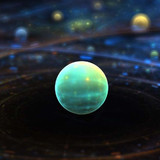INDI Library v2.0.7 is Released (01 Apr 2024)
Bi-monthly release with minor bug fixes and improvements
Seeking tips for imaging with schedule and sequences for EFW
- Radek Kaczorek
-

- Offline
- Moderator
-

- Posts: 983
- Thank you received: 375
Replied by Radek Kaczorek on topic Seeking tips for imaging with schedule and sequences for EFW
Please Log in or Create an account to join the conversation.
Replied by Stephen on topic Seeking tips for imaging with schedule and sequences for EFW
The other day of the 13 OIII, only one was usable due to passing clouds. Yet, the other filters were able to get 10 of the 14 as usable.
If the sequence of one per filter was done, there would have been at least 7-8 complete usable sets verses only one OIII.
Please Log in or Create an account to join the conversation.
- Radek Kaczorek
-

- Offline
- Moderator
-

- Posts: 983
- Thank you received: 375
Replied by Radek Kaczorek on topic Seeking tips for imaging with schedule and sequences for EFW
Please Log in or Create an account to join the conversation.
- Jasem Mutlaq
-

- Offline
- Administrator
-

Replied by Jasem Mutlaq on topic Seeking tips for imaging with schedule and sequences for EFW
Please Log in or Create an account to join the conversation.
Replied by Stephen on topic Seeking tips for imaging with schedule and sequences for EFW
If I could count on more than on clear night in a row I would do as you both suggest. It is what was previously done. Now I wait for another clear night to get last filter.
On the cloudy days this can allow me to learn pix with a few images and understand how to add more data from different days.
I will prioritize the Lum/Ha first though as you suggest. Then pickup sets of colour.
Cheers!
Please Log in or Create an account to join the conversation.
Replied by Stephen on topic Seeking tips for imaging with schedule and sequences for EFW
The repeat for sequence runs has been working great.
Is it possible to have this added on the CCD tab?
I am not always able to get the Scheduler to work. Align, tracking are working great now. Finding a guide star with the OAG often make the sequence fail.
When this happens the Mount tab works great to push the view slightly to find a star. Once found, with everything set, the scheduler needs to be edited so it does not track, align or guide. This past weekend, this would not work due to my faults during setup (accidentally had the RPI3 update Kstars location which just added to the issues).
If the CCD sequence could be triggered to run sequence, it would help greatly given the limited clear skies.
Thank you,
Stephen
Please Log in or Create an account to join the conversation.
- Jasem Mutlaq
-

- Offline
- Administrator
-

Replied by Jasem Mutlaq on topic Seeking tips for imaging with schedule and sequences for EFW
Please Log in or Create an account to join the conversation.
Replied by Stephen on topic Seeking tips for imaging with schedule and sequences for EFW
An example would be setting up a sequence of LRGB filters for one exposure each and then repeat the sequence X times, or until something stopped it.
The goal is to get enough images with each filter in one night to do some stacking. Then to add to the stack as additional clear skies come along. The scheduler has worked well, until I encountered the scenario above. If there is another way to do though, please let me know.
If there were 3-4 clear nights in a row it would not be a concern, as I would just load up each night for one filter only. For months now is has been partial night every 1-2 weeks.
Please Log in or Create an account to join the conversation.
Replied by Stephen on topic Seeking tips for imaging with schedule and sequences for EFW
An example would be setting up a sequence of LRGB filters for one exposure each and then repeat the sequence X times, or until something stopped it.
The goal is to get enough images with each filter in one night to do some stacking. Then to add to the stack as additional clear skies come along. The scheduler has worked well, until I encountered the scenario above. If there is another way to do though, please let me know.
If there were 3-4 clear nights in a row it would not be a concern, as I would just load up each night for one filter only. For months now is has been partial night every 1-2 weeks.
Please Log in or Create an account to join the conversation.
- Jasem Mutlaq
-

- Offline
- Administrator
-

Replied by Jasem Mutlaq on topic Seeking tips for imaging with schedule and sequences for EFW
Please Log in or Create an account to join the conversation.
Replied by Stephen on topic Seeking tips for imaging with schedule and sequences for EFW
The Altitude check was off though, and the schedule was set to go ASAP.
I know I had an issue with the location, plate-solving was working and centring. It was just the schedule would not go.
Any ideas?
Please Log in or Create an account to join the conversation.
- Jasem Mutlaq
-

- Offline
- Administrator
-

Replied by Jasem Mutlaq on topic Seeking tips for imaging with schedule and sequences for EFW
Please Log in or Create an account to join the conversation.

